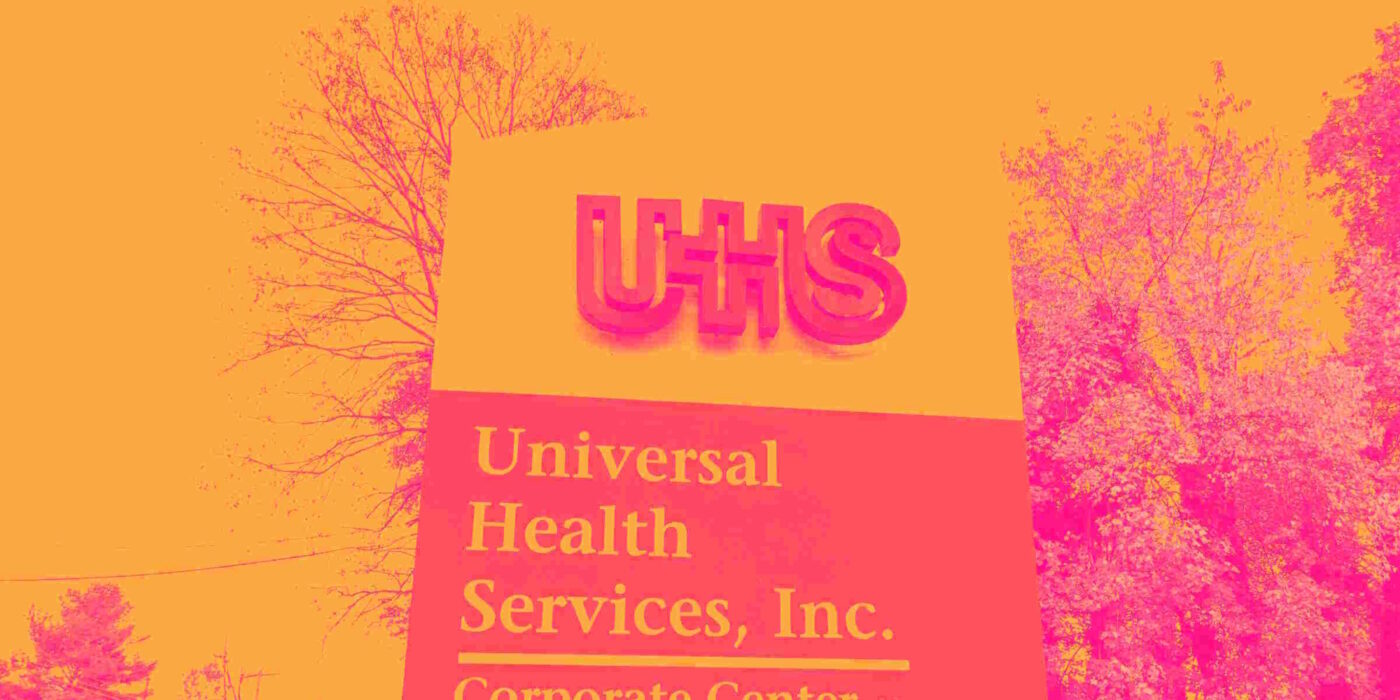
Hospital management company Universal Health Services (NYSE: UHS) reported Q2 CY2025 results topping the market’s revenue expectations, with sales up 9.6% year on year to $4.28 billion. The company expects the full year’s revenue to be around $17.2 billion, close to analysts’ estimates. Its non-GAAP profit of $5.35 per share was 8.4% above analysts’ consensus estimates.
Is now the time to buy UHS? Find out in our full research report (it’s free).
Universal Health Services (UHS) Q2 CY2025 Highlights:
- Revenue: $4.28 billion vs analyst estimates of $4.24 billion (9.6% year-on-year growth, 1% beat)
- Adjusted EPS: $5.35 vs analyst estimates of $4.94 (8.4% beat)
- Adjusted EBITDA: $652.3 million vs analyst estimates of $617.1 million (15.2% margin, 5.7% beat)
- Adjusted EPS guidance for the full year is $20 at the midpoint, beating analyst estimates by 1.9%
- EBITDA guidance for the full year is $2.50 billion at the midpoint, above analyst estimates of $2.46 billion
- Operating Margin: 11.7%, in line with the same quarter last year
- Same-Store Sales rose 2% year on year (3.4% in the same quarter last year)
- Market Capitalization: $11.15 billion
StockStory’s Take
Universal Health Services delivered a quarter that surpassed Wall Street’s expectations, with notable contributions from its acute care segment and improving expense control. Management highlighted that solid acute care revenues, aided by a 2% rise in adjusted admissions and effective cost management, drove a 10% increase in same-facility EBITDA. CEO Marc Miller acknowledged, "demand, especially for emergency services, has been very encouraging" at newly opened West Henderson Hospital, while the behavioral health segment continued to benefit from pricing gains despite modest volume growth.
Looking forward, Universal Health Services’ guidance is shaped by anticipated benefits from Medicaid supplemental payments and the ramp-up of newly opened and upcoming facilities, though management was clear about headwinds from policy changes. CFO Steve Filton cautioned that upcoming Medicaid reforms could reduce future supplemental payments, but emphasized, "we have great confidence in our ability to shift and be flexible, especially with several years of notice." The company is also prioritizing expansion of its outpatient behavioral health footprint to capture market share as payer trends shift.
Key Insights from Management’s Remarks
Management attributed Q2 results to acute care growth, behavioral pricing strength, and disciplined cost control, while outlining proactive strategies to address both policy risks and operational challenges.
- Acute care volume growth: Same-facility acute care admissions rose 2%, with revenue growth driven more by favorable payer mix and pricing than by surgical volume, which was slightly down. Management noted the impact of new hospital openings, particularly West Henderson Hospital.
- Behavioral health pricing outperformance: Behavioral health segment revenues increased 5.4% (excluding specific Medicaid payments), with pricing up 4.2%. Management emphasized that while pricing remains strong, volume growth—especially outpatient—remains a focus for improvement.
- Expense management and margin stability: Operating expenses increased at a slower pace than revenues, supporting stable operating margins. Management cited lower reliance on temporary staff and effective recruiting as key to containing labor costs.
- Cannibalization from new facilities: The opening of West Henderson Hospital slightly reduced same-store growth in the acute segment. CFO Steve Filton estimated a 50-60 basis point impact on adjusted admissions, illustrating the complexities of expanding in overlapping markets.
- Behavioral outpatient expansion: Management detailed a strategy to open 10–15 new freestanding outpatient behavioral facilities annually, aiming to better capture both "step-down" (post-inpatient) and "step-in" (community-based) demand, as payers shift preference toward outpatient behavioral care.
Drivers of Future Performance
Universal Health Services expects Medicaid policy changes, continued outpatient expansion, and new facility ramp-up to shape revenue and margin trends in the coming quarters.
- Medicaid policy headwinds: The company faces potential reductions in Medicaid supplemental payments starting in 2028, with estimates of an annual $360–$400 million impact by 2032. Management is preparing to adjust business mix and pursue new programs, but acknowledged these changes introduce long-term uncertainty.
- Outpatient behavioral growth: Management is prioritizing expansion in outpatient behavioral services, viewing this as a significant opportunity amid payer-driven shifts away from inpatient care. The plan includes opening additional standalone outpatient centers and capturing more post-inpatient patient flow.
- Operational flexibility and technology adoption: Management believes its ability to adapt—through cost controls, shifting service lines, and technology investments such as AI for revenue cycle and patient follow-up—will be critical to offsetting policy-driven revenue risks and maintaining profitability.
Catalysts in Upcoming Quarters
In the coming quarters, our analysts will focus on (1) the pace of outpatient behavioral health expansion and its impact on segment volumes, (2) the operational ramp of new facilities such as Cedar Hill and West Henderson, and (3) state-level developments regarding Medicaid supplemental payments and the One Beautiful Bill Act. Execution on technology initiatives and labor cost containment will also serve as important markers of progress.
Universal Health Services currently trades at $175.78, up from $154.99 just before the earnings. In the wake of this quarter, is it a buy or sell? See for yourself in our full research report (it’s free).
High Quality Stocks for All Market Conditions
When Trump unveiled his aggressive tariff plan in April 2025, markets tanked as investors feared a full-blown trade war. But those who panicked and sold missed the subsequent rebound that’s already erased most losses.
Don’t let fear keep you from great opportunities and take a look at Top 6 Stocks for this week. This is a curated list of our High Quality stocks that have generated a market-beating return of 183% over the last five years (as of March 31st 2025).
Stocks that made our list in 2020 include now familiar names such as Nvidia (+1,545% between March 2020 and March 2025) as well as under-the-radar businesses like the once-micro-cap company Kadant (+351% five-year return). Find your next big winner with StockStory today.
StockStory is growing and hiring equity analyst and marketing roles. Are you a 0 to 1 builder passionate about the markets and AI? See the open roles here.






